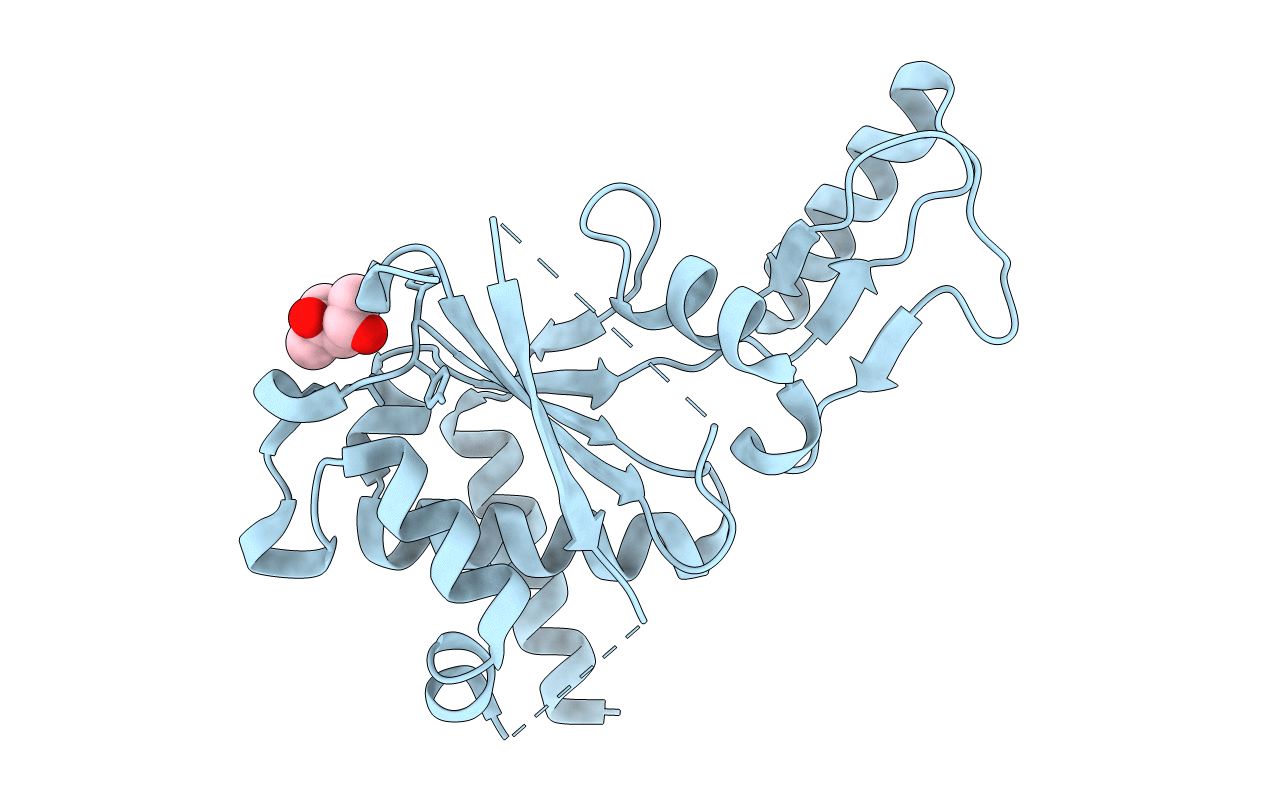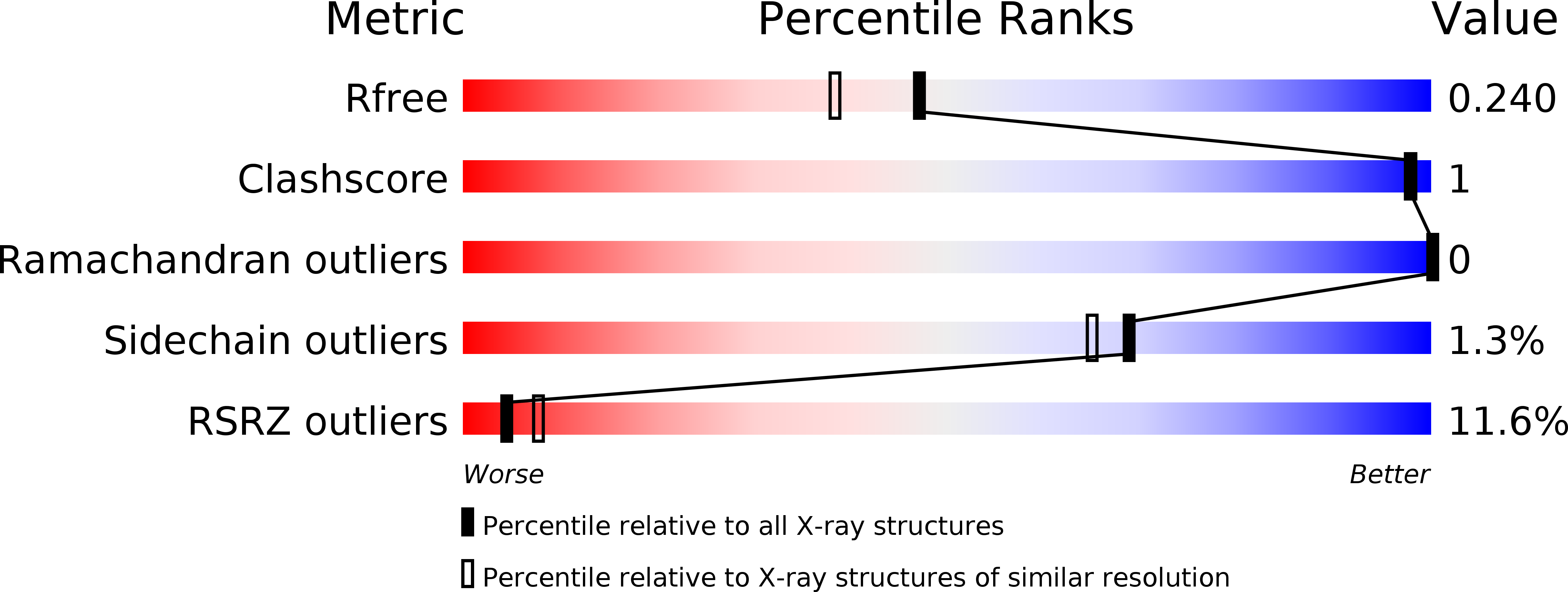
Deposition Date
2010-03-11
Release Date
2010-09-29
Last Version Date
2023-11-01
Entry Detail
PDB ID:
3M4I
Keywords:
Title:
Crystal structure of the second part of the Mycobacterium tuberculosis DNA gyrase reaction core: the TOPRIM domain at 1.95 A resolution
Biological Source:
Source Organism:
Mycobacterium tuberculosis (Taxon ID: 1773)
Host Organism:
Method Details:
Experimental Method:
Resolution:
1.95 Å
R-Value Free:
0.22
R-Value Work:
0.20
R-Value Observed:
0.21
Space Group:
P 43 21 2


